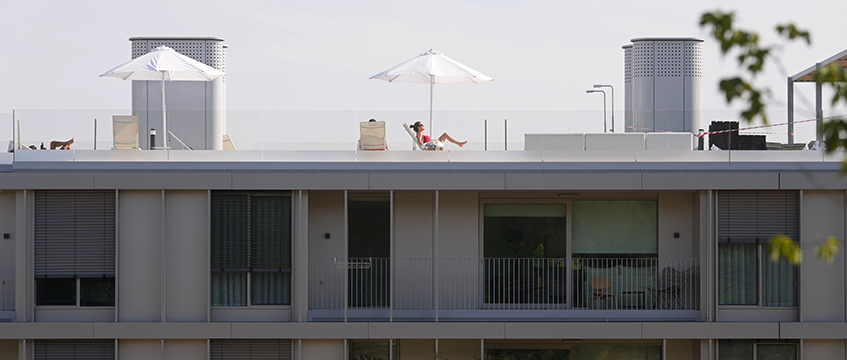With reform anticipated and political events both in the UK and abroad affecting the property market, 2022 has not been awash with claims under the Leasehold Reform, Housing and Urban Development Act 1993.
However, there are some common themes in this year’s enfranchisement cases – and perhaps some lessons to be learnt.
The valuation jigsaw
In January 2022, the Upper Tribunal (Lands Chamber) handed down its decision in Brickfield Properties Ltd v Ullah [2022] UKUT 25 (LC); [2022] PLSCS 24), a new lease claim.
On the day the claim notice was served, the short leasehold interest subject to the notice was sold for £112,000. The buyer then sold the property at auction two weeks later for £175,000. The UT said that in carrying out a valuation, it was necessary to have regard to all available evidence, and then to consider how it all fitted together. There were three pieces to the valuation jigsaw in the case: (i) the sale at £112,000; (ii) the auction sale at £175,000; and (iii) valuation by reference to relativity graphs.
The adjusted first sale price at £112,000 represented a relativity of 31.46%, which was consistent with the average graph relativity figure of 32.1%. However, the adjusted auction sale price equated to a relativity of 49.57%.
The consistency of the first sale price with the graphs indicated that the first sale price was more likely to reflect the market value than the auction sale price. The evidence surrounding the auction was sufficiently opaque to not displace the two other jigsaw pieces which fitted together.
Up on the roof
Rooftop developments have continued to be a battleground between landlords and tenants, and in February the UT gave its decision in Vectis Property Co Ltd v Cambrai Court Management Co Ltd [2022] UKUT 42 (LC); [2022] PLSCS 38. The issue before the tribunal was whether the landlord had the right to construct two new flats on the roof of the block, which the tenants had claimed to collectively enfranchise. The UT found first that the landlord did not need to reserve any rights over the roof and the airspace above because it had not demised them. Second, the First-tier Tribunal had erred in concluding that the rights and obligations of the management company and the lessees in relation to the roof related only to the roof as it originally existed or a similar roof: the obligation was to maintain whatever roof was on the building and the repairing obligations (and rights of access) would therefore be to the roof of the new flats. Third, the letting scheme contained in the leases did not restrict the number of flats and the management company was obliged to join in future leases. Fourth, while it was possible that a dangerous or noisy building operation could put the landlord in breach of covenant, the need to protect the existing flat owners and abide by its covenants was part of the cost for which a freeholder would budget and would not amount to a legal bar to development.
Auction prices
Continuing on the themes of both auction sales and development value, in August the UT gave judgment in Properties AY&U Ltd v Barham House Freehold Ltd [2022] UKUT 231 (LC); [2022] PLSCS 142. The subject property, a block of eight flats, was sold at auction for £91,000. Four weeks later the tenants made a claim to collectively enfranchise.
The landlord’s expert produced a residual valuation of £1.23m based on a successful basement conversion and a rooftop development being permitted at a future point. He made no reference to the auction sale price as he did not consider it to be relevant. The tenants’ expert considered that there was no development value, merely a hope value of £10,000, because no rooftop development would be permitted and there was uncertainty about the property’s structure below ground. He believed that the landlord had overpaid for the freehold at auction.
The FTT decided that there was no evidence that the valuation of the landlord’s expert could realistically be achieved in the open market and adopted the tenants’ valuation. The landlord appealed, arguing that the FTT should have used the auction purchase price as a reliable indicator of market value given that it had occurred only four months earlier.
The UT held that, in the face of a consensus that the auction price was either irrationally high or irrationally low and in any event did not represent open-market value, the FTT could not be criticised for failing to give it greater weight. It had heard no evidence from the landlord of its own reasons for paying £91,000.
Together with Ullah, Barham House is a lesson in the need for evidence when relying on auction sales. Prudent bidders will invariably have calculated their bid in advance of the auction and, when purchasing a freehold, will have included in that calculation any perceived development value. That may well be the best evidence of such value.
Further, evidence from the auction room – such as the number of bidders and the value of the under-bid – may support a conclusion that the auction price is the best indicator of market value.
The decision in Barham House is, of course, also a salutary lesson in the dangers of “over-egging” it. Had the landlord, in fact, relied on the auction sale, it may have been more successful.
Ellodie Gibbons is a barrister at Tanfield Chambers








